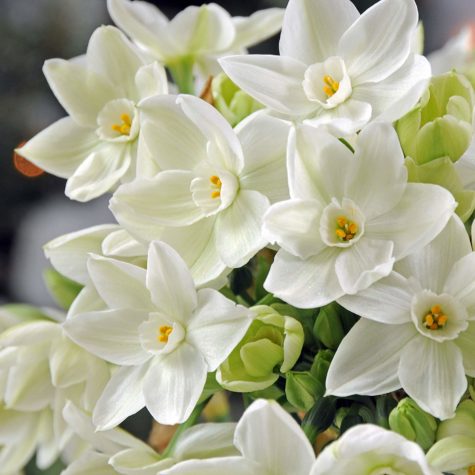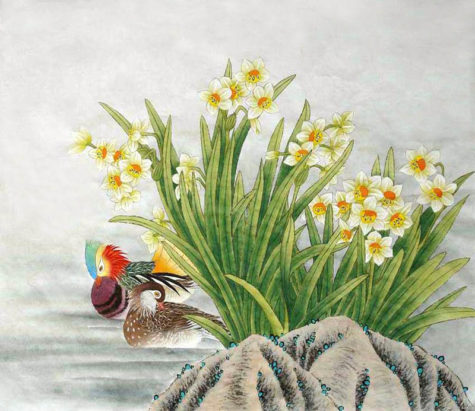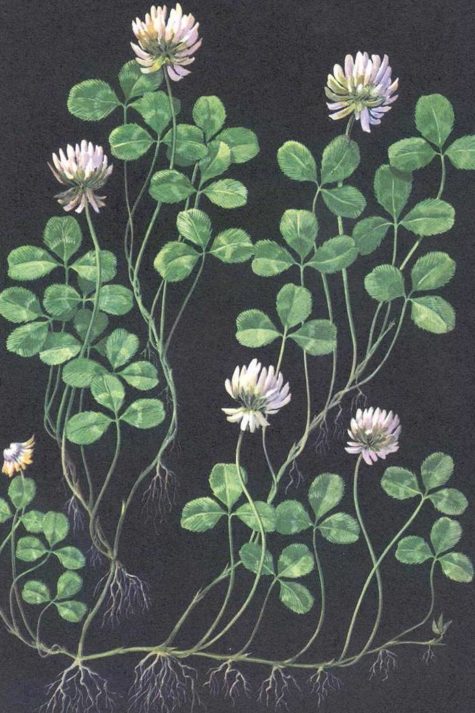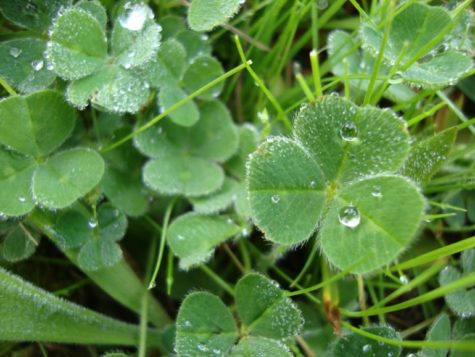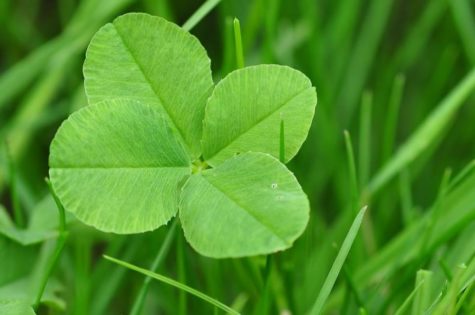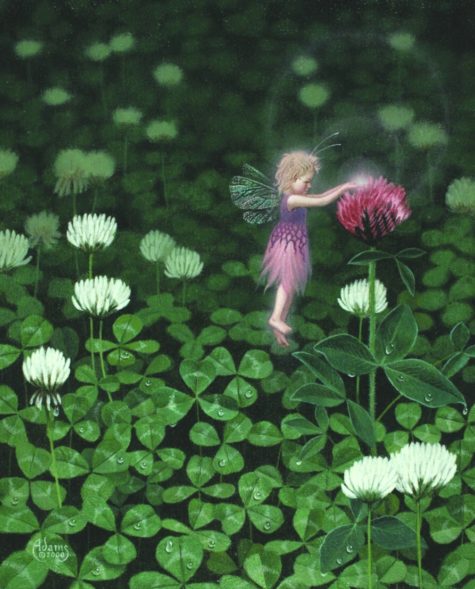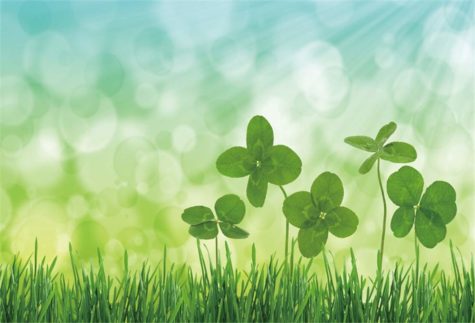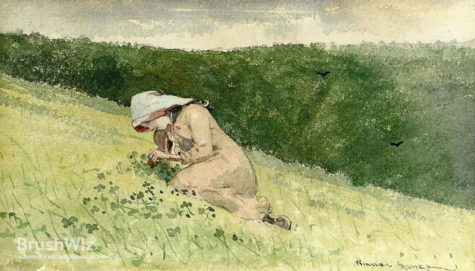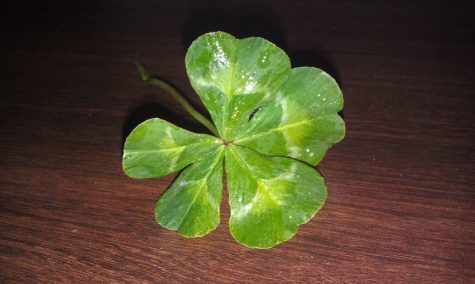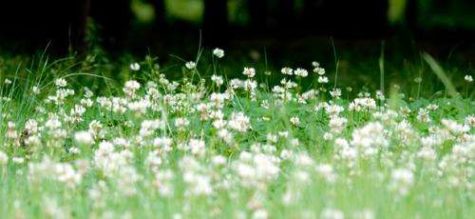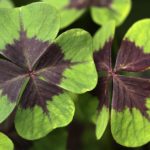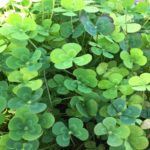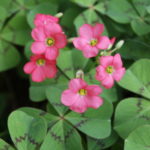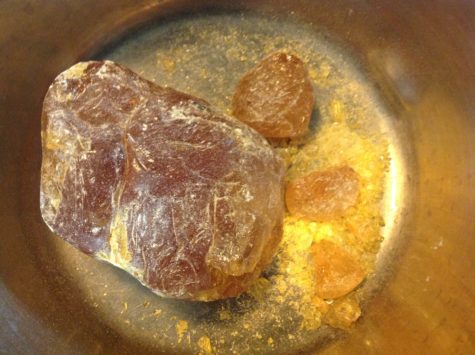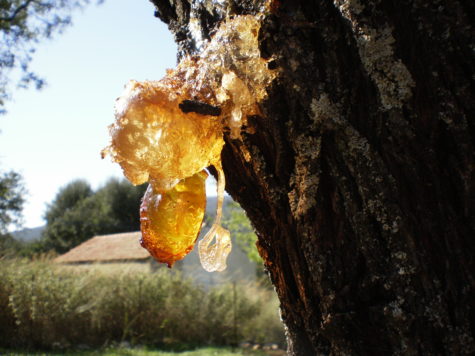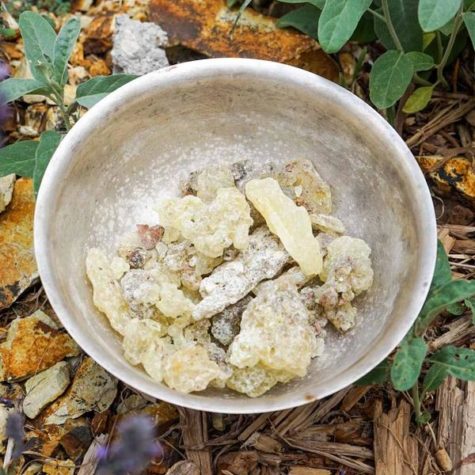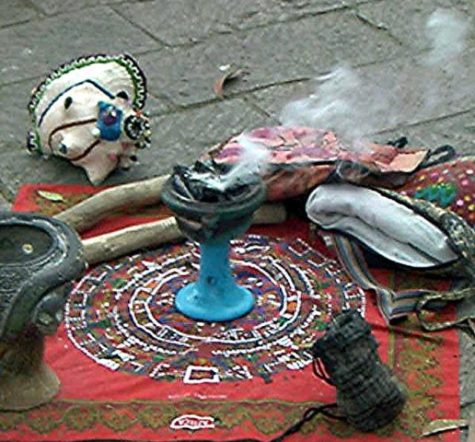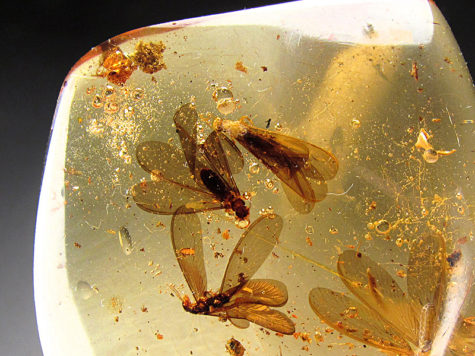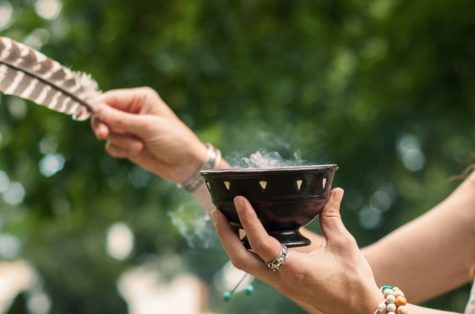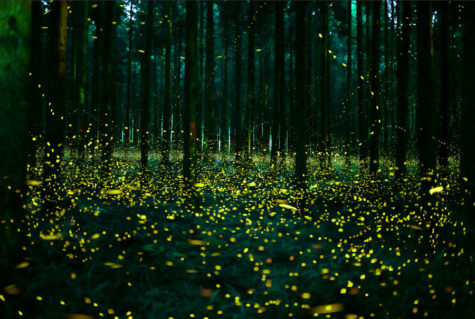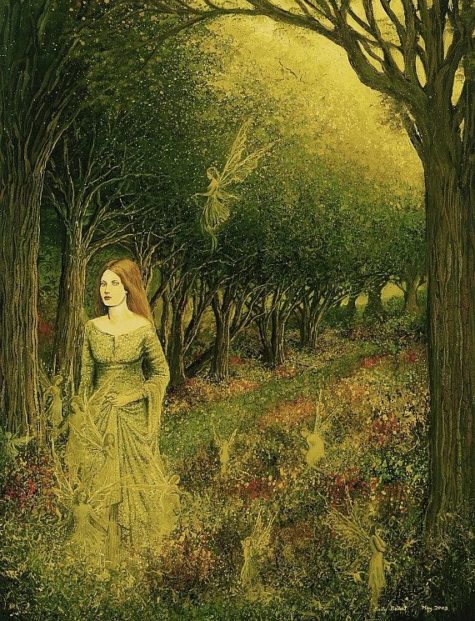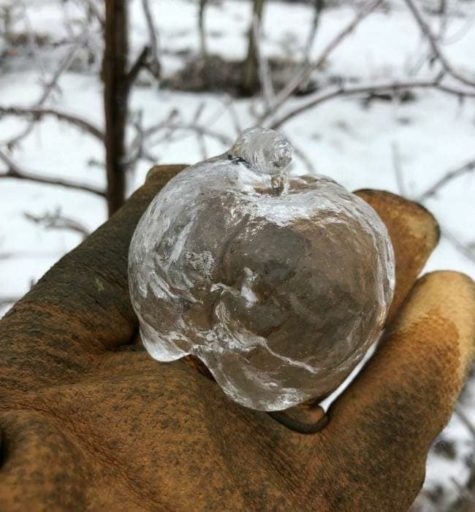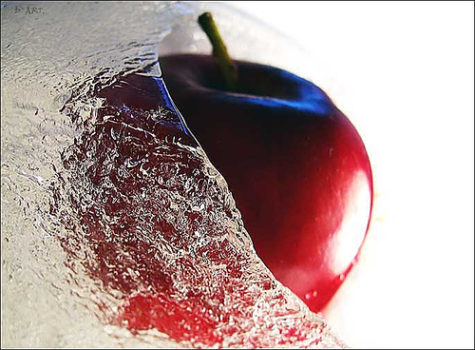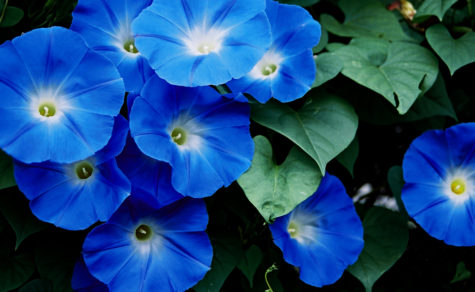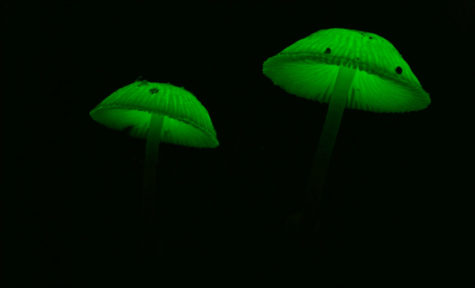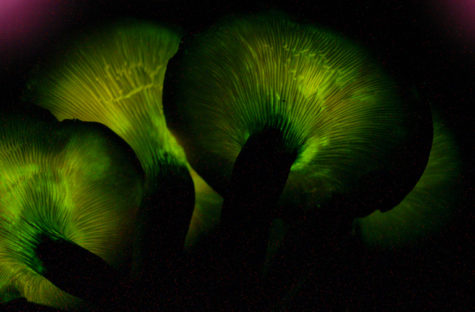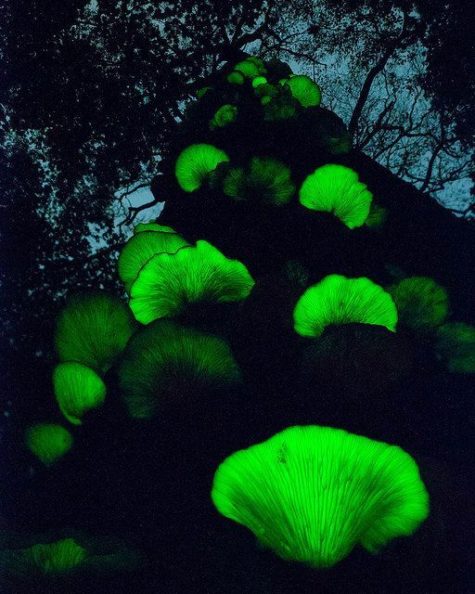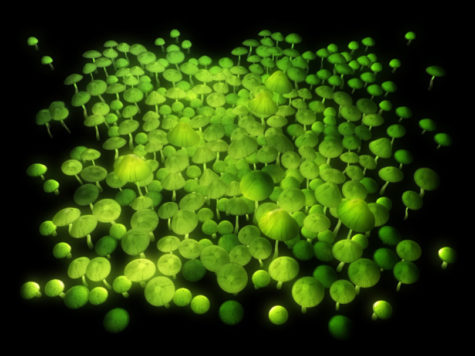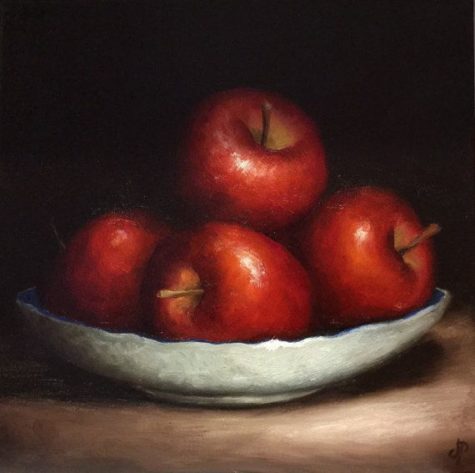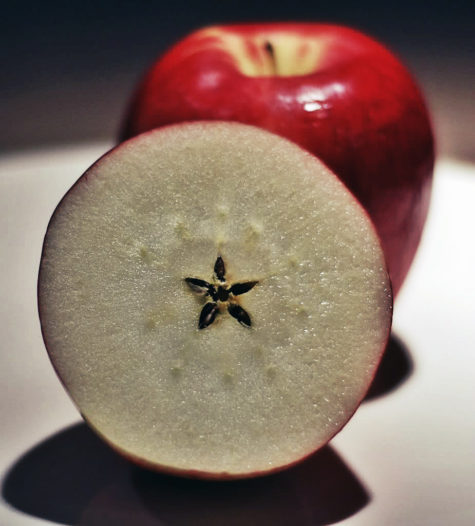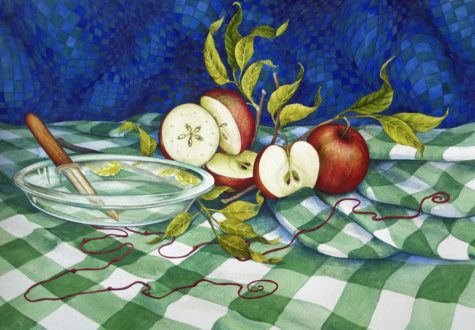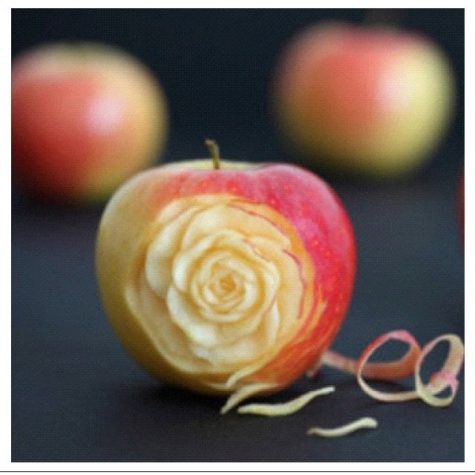- Ruler: Dionysus
- Type: Plant
- Sign: Virgo
- Tarot Card: The Hermit
- Magickal Form: Flower, Essential Oil
The Narcissus is often assigned to the month of December, and is also associated with the Chinese New Year which occurs in February.
Wear this scent to entice others and promote self-love and self-confidence. Overuse can attract stalkers and create egomaniacs – so don’t over do it. Rub on pink candles to meet new people. Rub black Narcissus oil on black candles for self-hypnosis. Use the oil on red candles to hypnotize and bewitch another.
In China, for centuries, narcissus bulbs have been placed in bowls with rocks and water. They are then “forced” into flowering by the Chinese New Year to acquire good fortune.
This old-fashioned flower for late spring is famous for its fragrance, which is one of the most expensive in the world. The Romans made a perfume from this flower, and it featured in early Arab perfume as well. The scent is a combination of jasmine and hyacinth. Its fragrance affects the nervous system (Mercury again), relieving stress.
These beautiful flowers emit sweet, lovely fragrances long used to manifest new relationships or to enrich the love already shared with another. The purple varieties seem to be best for this use. In the Middle East, the scent is thought to be aphrodisiac.
Magickally, this old-fashioned flower is dedicated to virgins, hermits, those who practice a solitary spirituality, and people who just enjoy being alone. Reasonably, it is connected to the sign of Virgo and the Hermit card. Venus bathed in narcissus flowers before winning a contest of beauty against Juno and Diana, but the plant is sacred to Adonis.
You would think then that this magick herb would be associated with the Sun, but instead it is considered a Mercury herb. Its name comes from the word for “stuck dumb” due to the power of its poisons to take away speech, which Mercury rules. Narcissus is specific for Mercury magickal works, such as those leading to parthenogenesis and invisibility.
Narcissus vs Daffodil
Though their botanic name is Narcissus, they are often also called daffodils, and sometimes jonquils, or paper whites. In England, because of their long association with Lent, they’re known as the “Lent Lily.”
The term “Daffodil” commonly refers to Narcissus with large trumpets, but may be used for all types of Narcissus . This is the official common name for ANY of the plants that fall into the genus Narcissus. So, if the plant is considered a Narcissus, it is also considered a daffodil as well. However, most people use the term “daffodil” when referring to the large, trumpet-shaped flowers of the Narcissus pseudoNarcissus .
- In Victorian flower language daffodils signified regard and chivalry, whilst the Narcissus meant self esteem, female ambition or vanity.
You can read more about the magickal properties of the Daffodil here: Daffodil Magick and Lore.
Narcissus in Mythology
The Narcissus is named after the legendary young Greek man of the same name. Narcissus was pretty full of himself because he had been given the gift of great beauty by the gods. One day, a sweet young wood nymph named Echo spotted Narcissus hanging out by a stream and instantly fell in love with him. However, he was so busy being completely self-absorbed that he ignored Echo, and she wasted away from loneliness until nothing was left of her but her voice. Thanks to this tragic story of unrequited love, the Narcissus is sometimes used to represent a love that is one-sided.
Later, the goddess Nemesis, although in some versions, it’s Venus, got wind of what had happened to Echo, so she decided it was time to teach Narcissus a lesson. She led him to a stream, where he happened to notice the most beautiful young man he had ever seen – it was his own reflection, and he was so vain that he fell in love with his own image, transfixed, and forgetting to eat and sleep. Some of the other gods were worried that Narcissus was going to starve to death, so they turned him into a flower, which now blooms every year in the spring.
- Alternatively
It is possible that this plant wasn’t named after the youth who fell in love with his reflection in a pool of water. Pliny states that the name was derived from the word “narkao, to benumb, due to the plant’s dramatic effects on the nervous system when taken internally. Never eat any part of this plant.
- Folk Names: Trefoil, Honeystalks, Three-leafed Grass
- Ruler: Jupiter, Mercury
- Element: Earth, Air, Fire, Water
- Types: Red, White
- Magickal Forms: Three leaf, four leaf, and five leaf
- Basic Powers: Protection, Luck, Fertility, and Abundance
Clover was one of the anti-witch plants which protected human beings and animals from the spells of malevolent witches and the wiles of fairies, and brought good luck to those who kept it in the house, or wore it in their buttonholes or hats. Some varieties of clover have three distinctly heart shaped leaves ~ both elements, the number 3 and the shape, contribute to its benevolent reputation.
The shamrock, the form of clover that is synonymous with all things Irish – was known as the shamrakh in Arabic countries and symbolized the triple aspect of the Goddess. A symbol of luck, leprechauns, and wishes, the shamrock is a powerful talisman to carry.
It could be used in love-divination; and to dream of it was very fortunate for young people, since such a dream foretold a happy and prosperous marriage.
Red clover flowers bring good luck in love and marriage matters and are carried in mojos for satisfying conjugal relations and to ensure a happy marriage. White clover flowers protect from evil and bring an end to “crossed” conditions.
In folk magic Red Clover is used in a ritual bath to attract money and prosperity to the bather and is also used as a floorwash to chase out evil and unwanted ghosts. White Clover is used for breaking curses and is worn as a sachet or put in the four corners or a house or someone’s property to achieve this.
If someone has done well in life, he or she is said to be “living in clover.” This probably originates from the fact that cattle grow best when grazing in fields of clover.
Clover keeps snakes away from your property, if grown there. When placed in the left shoe, and then forgotten, clover keeps evil from you. Worn over the right breast it brings success in all undertakings.
If you have been disappointed in love, wear clover near your heart in a piece of blue silk to help you through.
It also protects against madness, strengthens psychic powers, enables you to detect the presence of spirits, and leads the wearer to gold, money, or treasures.
Clover vs Shamrock
The term shamrock is derived from the Gaelic word seamrog which means “little clover.” It is famous as a symbol of Ireland. St. Patrick believed that the three tiny leaves represent the Holy Trinity, which it is all over the place on St. Patrick’s Day.
There is no specific “shamrock plant.” However, most scientists agree that the term “shamrock” refers to Trifolium Repens or the white clover. Others believe that it is also used when referring to Trifolium Dubium or suckling clover. Both species have leaves that are separated into three leaflets, hence the term “trifolium.”
On the other hand, clover or “trefoil” is a common term that refers to any of the 300 species that belongs to the Trifolium family. Trifolium plants like the red clover, white clover, Swedish clover, strawberry clover, and Alsatian clover are small, green, flower-bearing, and herbaceous. They can be short-lived, perennial, or annual.
A clover is trifoliate, which means the leaves are subdivided into three toothed leaflets, although four-leaf, five-leaf, and six-leaf clovers can be occasionally found due to a natural genetic mutation. It is believed that there is only one four-leaf clover in a hundred thousand three-leaf clovers, which is why it is widely accepted as a symbol of luck.
What, then, is the difference between a shamrock and a clover?
“Clover” is a generic term that refers to trefoils, or any of the 300 species that belong to the Trifolium family. These plants have leaves that are separated into three leaflets, but you may find four-leaf, five-leaf or even six-leaf clovers as a genetic abnormality. “Shamrock,” on the other hand, means “little clover” and is used to refer to the white clover species or the suckling clover species. It is also the symbol of Ireland and St. Patrick’s Day.
In conclusion, shamrocks are clovers, but not all clovers are shamrocks. So, that green leaf you see on St. Patrick’s Day? It’s a shamrock and a clover.
Three Leaf Clover
Some folk traditions assign a different attribute to each leaf of a clover. The three leaf clover represents the Holy Trinity ~ Father, Son, and Holy Spirit. Alternatively, it represents the Maiden, Mother, and Crone.
The three leafed clover is often used in rituals designed to protect or to keep one looking youthful and fair. As a protection carry one on your person.
To keep looking young, gather dew on May Day morning, just before the Sun rises. Put into this water three clover stalks. Let these steep all day out of the Sun’s rays. The next morning, again before the sun rises, rub a little of the water on your face. Do this every morning until the water is used up. Cover the bowl with a cloth to keep the water clean and store in a place where it will remain untouched until the following morning.
Early Christian proselytizers, such as St. Patrick, used both the shamrock and the clover to demonstrate the three-in-one notion of the trinity ( father, son, and holy spirit). It is also said that snakes will not venture where clover grows, which ties into the idea of St Patrick and his reputation for driving the snakes out of Ireland.
That said, the Irish had imbued the shamrock with meaning before St. Patrick came along. Three-leaf clovers featured prominently in ancient Celtic rituals and folklore (triads and the number three were considered spiritually significant back then, too).
With its three leaves, Clover is a very shamanic plant allowing one to see into and interact with the Otherworld. It is a good talisman of protection and power for traveling out of body and walking between worlds. Never underestimate the magical power of this simple and harmless weed. It also makes a good offering to Mercurial deities and can be burned with incense, added to ritual smoking blend, made into alcoholic brews, or left with a food offering.
Four Leaf Clover
Although all clover has the same magickal properties, it is the rare four leafed kind that is especially powerful. Such a plant, when found, enabled the finder to see fairies, detect witches, and recognize evil spirits. Anyone wearing a four-branched leaf was safe from malicious enchantments and one hidden in the dairy, or barn prevented witches from harming the milk supply or the butter.
If a girl wore a four leaf clover in her right shoe, the first unmarried man she met on her first journey with it would be her future husband, or if not he, then another man of the same name. Another method is to pin the four leaf clover above the front door of her home. Again, the first unmarried man who walks through her door will become her husband.
There is a story in the Denham Tracts of a Northumberland girl who, when returning from milking, saw fairies dancing in the field. No one else could see them, though she pointed them out. She was not normally second-sighted, and it was afterwards discovered that the source of her vision lay in the circular pad she wore on her head to support the milk pail. Among the grasses with which it was stuffed was a four leaf clover.
Four leafed clovers are genetic mutations of the three leafed varieties, and well-known European – American charms, bringing in (and representing) health, wealth, love and luck, and protecting from witchcraft. An old rhyme is as follows:
One leaf for fame,
One leaf for wealth,
And one for a faithful lover,
And one leaf to bring you glorious health,
Are all in the four leaf clover.
The luckiest four leaf clover is one you find when you are not looking for one. The four leaf clover carries all the symbolism of the number 4.
Some people press four leafed clovers in a book, such as the Bible, and keep them in the house. Others carry a dried and flattened four leafed clover in their wallet, to draw money, even going so far as to laminate them to card-stock to preserve them. Jewelers make effigies of them, working these into key chain fobs, brooches, pendants, and rings.
An old legend says that when Adam and Eve were expelled from the Garden of Eden, Eve took a four leaf clover with her to remind her of the happiness she had enjoyed there. Consequently finding a four leaf clover became a sign of good luck and happiness. Anyone lucky enough to be in possession of a four leaf clover has a piece of the blessed Paradise.
In the seventeenth century, four leaf clovers were sometimes strewn in the path of a bride to provide her with extra protection from evil spirits on her special day.
Four leaf clovers are carried to prevent madness. It is also a popular amulet to avoid military service. Gather the four leaf clovers in the morning, then walk to the nearest hill. As the Sun rises throw one clover to the North, and one to each of the other directions, calling upon the powers of the Elements to protect you, to keep you from getting drafted or whatever your wish is. Then, after finishing the ritual, pluck one more four leaf clover (remember, leave something in payment to the earth for the plant taken) and keep it as a magickal link with the elements.
They are also a frequent image on good luck tokens and they appear on greeting cards and postcards conveying good wishes to the recipient. Some say that four-leaf clovers grant the power to see fairies. In other traditions it is said that they are related to St. Patrick’s use of the shamrock to explain Christianity to the Irish, the cross of Jesus being made up of 4 parts.
The earliest mention of “Fower-leafed or purple grasse” is from 1640 and simply says that it was kept in gardens because it was “good for the purples in children or others.” John Melton, an English writer wrote the following in 1620 about the clover:
“That if any man walking in the fields, find any foure-leaved grasse, he shall in a small while after find some good thing.”
A description from 1869 says that four-leaf clovers were “gathered at night-time during the full moon by sorceresses, who mixed it with vervain and other ingredients, while young girls in search of a token of perfect happiness made quest of the plant by day.” The first reference to luck might be from an 11-year-old girl, who wrote in an 1877 letter to St. Nicholas Magazine, “Did the fairies ever whisper in your ear, that a four-leaf clover brought good luck to the finder?”
Five Leaf Clovers
Sometimes a five leafed clover might be spotted by those who have particularly sharp eyesight. Because the number five combines the feminine 2 with the masculine 3 , it symbolizes marriage or engagements.
The five leaf clover also represents the pentagram or five pointed star and multiplies the blessings of the shamrock by five. The first leaf represents hope, the second stands for faith, the third is for love and the fourth leaf brings luck to the finder. A fifth leaf represents money, but there is no meaning as yet for the sixth leaf and above. Some reports claim six to be fame and seven to be longevity, though the notions’ origination is unknown.
Five-leaf clovers are less commonly found naturally than four-leaf clovers; however, they have been successfully cultivated. Some four-leaf clover collectors, particularly in Ireland, regard the five-leaf clover, known as a rose clover, as a particular prize.
In exceptionally rare cases, clovers are able to grow with six leaves and more in nature. The most leaves ever found on a single clover stem (Trifolium repens L.) is 156 and was discovered by Shigeo Obara of Hanamaki City, Iwate, Japan, on 10 May 2009.
Clover Blossoms For Purification
Here are some ways clover blossom can be used for purification:
- Place two drops clover blossom flower essence in a mister of rose water and mist an interior space to purify the vibrations. You can also mist your body and aura for the same purpose.
- Drink two to three cups white clover blossom tea per day to support physical detoxification. Drink two to three cups red clover blossom tea per day to support emotional detoxification (after abuse, a challenging breakup, etc.)
- Take four drops white or red clover blossom essence under the tongue or in water twice per day to support physical and emotional purification.
- Place fresh clover blossoms in bath water, along with one cup sea salt, for a physical/emotional/spiritual purification bath.
- After space clearing, arrange fresh clover blossoms and soy candles together on a plate and place in a central location in a room. Repeat in each room and area of the home, and light the candles to help set the new vibration in place and to further purify and uplift the energy.
Not a Clover
Because four leaf clovers are fairly rare, an unrelated plant called Oxalis (which has similar looking leaves, but entirely different flowers) is sometimes sold as a substitute for them. At Saint Patrick’s Day, many nurseries sell potted Oxalis as “lucky shamrocks.”
There are a number of plants that look like clover and have three or four leaflets. In particular, Oxalis tetraphylla (also known as O. deppei) has spread from cultivation and can be found living wild in various places. It has four leaflets and is actually known as four-leaf clover in some places.
O. tetraphylla is also known as four-leaf sorrel or Iron Cross, and it does look a lot like a four-leafed white clover. The primary difference is that the center of O. tetraphylla is often tinged with purple – and it does not produce the white flowers we normally associate with white clover.
Marsilea mutica, is another plant that is billed as a variegated four leaf clover, and sold as an attractive and versatile addition to your pond. Each leaf appears to be a perfect 4 leaf clover, and is advertised as bringing the luck of the leprechaun to all who view it. Whether luck and leprechauns are truly drawn to it, I do not know.
Sources:
- Encyclopedia of Magickal Ingredients
- Magickal Herbalism
- Hoodoo Herb and Root Magic
- Wikipedia
- Encyclopedia of Superstitions
- Difference.guru
- Sarah Anne Lawless
- Tess Whitehurst
Runes are an ancient alphabet most often associated with divination, but the symbols themselves can also be used as magickal ingredients in spells. The symbols can be carved into candles, apples, potatoes, and more. With a finger or quill dipped in oil, ink, or water, they can be written on paper, fabric, or your own skin. They can be drawn in sand, soil, or salt. Because they are an alphabet, they can also be used to spell out words or names. The possibilities are endless, limited only by your imagination.
With that in mind, here is a list of Runes and their correspondences:
Ansuz, Ass, As:
Communication skills, creative thought, artistic inspiration, perceptive ability, application of knowledge.
- Meaning: Yggdrasil, the primal sound, Aum
- Letter: A (as in ace)
- Element: Air
- Tree: Ash
- Herb: Fly Agoric
- Deity: Odin
- Color: Dark blue
- Tarot Card: Death
- Planet: Venus
- Sequential number: 3
- Relates well to: Sources of inspiration and intellectual expression.
Berkanan, Berkana, Bjarka, Beore:
Care and compassion, conservation, protectiveness, ability to form close relationships, blossoming, fruitfulness.
- Meaning: Regeneration, the breasts of the Earth Goddess
- Letter: B (as in birth)
- Element: Earth
- Symbol: Breasts
- Tree: Birch
- Herb: Lady’s Mantle
- Deity: Frigg, Nerthus, Hel
- Color: Dark green
- Tarot Card: The Empress
- Astrology Sign: Virgo
- Sequential number: 17
- Relates well to: What provides growth and beauty.
Dagaz, Dag:
Transformation, self-fulfillment, completion, one-ness.
- Meaning: Balance, night and day, black and white
- Letter: D (as in day)
- Element: Fire, Air
- Symbol: Day or dawn
- Tree: Spruce
- Herb: Clary
- Deity: Odin, Ostara, Heimdall
- Color: Light blue
- Tarot Card: Temperance
- Planet: Half Moon
- Sequential number: 23
- Relates well to: Area of unexpected synchronicity.
Ehwaz, Eh:
Balance and control, communicative skill, adjustment.
- Meaning: An intuitive bond (as with horse and rider)
- Letter: E (as in end)
- Element: Earth
- Symbol: Horse, two horses
- Tree: Ash, Oak
- Herb: Ragwort
- Deity: Freya, Freyr, Aclis
- Color: White
- Tarot Card: The Lovers
- Astrology Sign: Gemini
- Sequential number: 18
- Relates well to: With what or whom you should work. Erotic relations.
Ihwaz, Eoh, Eihwaz:
Supportive energy, endurance, longevity, perseverance.
- Meaning: Yew tree, regeneration, longevity
- Letter: Ei (as in height)
- Element: All
- Tree: Yew, Poplar
- Herb: Mandrake
- Deity: Ullr, Idhunna, Freya
- Color: Dark blue
- Tarot Card: The Hanged Man
- Astrology Sign: Scorpio
- Sequential number: 13
- Relates well to: Hidden influences, state of whole being. Relationship with the numinous environment.
Fehu, Feh, Feoh:
Culmination, exchange and distribution, generated wealth.
- Meaning: Cattle; Moveable wealth
- Letter: F (as in fee)
- Element: Fire, Earth
- Tree: Elder
- Symbol: Cattle, Cow
- Herb: Nettle
- Deity: Freya
- Color: Light Red
- Tarot Card: The Tower
- Astrology Sign: Aries
- Sequential number: 24
- Relates well to: Money matters. Psychic energies.
Gebo, Gifu, Gyfu:
Bonding and binding, compensation, fair exchange, respect of boundaries, generosity and compassion.
- Meaning: Sacred mark, a gift to the Gods
- Letter: G (as in gift)
- Element: Air
- Symbol: Gift
- Tree: Ash, Elm
- Herb: Heartsease
- Deity: Gefn, Odin, Freya,
- Color: Deep blue
- Tarot Card: The Lovers
- Astrology Sign: Pisces
- Sequential number: 6
- Relates well to: What will be given to you.
Hagalaz, Hgalz, Hagal:
Dramatic liberation, birthing, bridging, correction of imbalance, advantageous adversity.
- Meaning: Ice or hail, transformation
- Letter: H (as in hail)
- Element: Water, Ice
- Symbol: Ice, hail
- Tree: Ash, Yew
- Herb: Lily of the Valley
- Deity: Urd, Ymir
- Color: Light blue
- Tarot Card: The World
- Astrology Sign: Aquarius
- Sequential number: 8
- Relates well to: Area of possible crisis leading to transformation.
Isa, Iss, Is:
Contraction, cohesion, preservation, stability, inner strength, stillness, suspension, self-containment.
- Meaning: The stillness of inertia
- Letter: I or E (as in seed)
- Element: Ice, water
- Symbol: Icicle
- Tree: Alder
- Herb: Henbane
- Deity: Verdandi, Rime Thurses
- Color: Black
- Tarot Card: The Hermit
- Planet: Moon
- Sequential number: 10
- Relates well to: What is constraining you.
- Note: This Rune reinforces Runes around it.
Jera, Jara:
Gradual development, sequential timing, cultivation.
- Meaning: The cycle of time, fruition, a good harvest
- Letter: J or Y (as in yes)
- Element: Earth
- Symbol: A year
- Tree: Oak
- Herb: Rosemary
- Deity: Freya, Freyr
- Color: Light blue
- Tarot Card: The Fool
- Planet: Sun
- Sequential number: 11
- Relates well to: Where rewards can be expected. Relationship with the natural environment.
Kano, Kenaz, Ken:
Clarity of thought, analytical ability, constructive expression, enthusiasm, intensity.
- Meaning: Fire, a torch, a beacon
- Letter: K (as in kettle)
- Element: Fire
- Symbol: Beacon or Torch
- Tree: Pine
- Herb: Cowslip
- Deity: Freya, Dwarves, Heimdall
- Color: Light red
- Tarot Card: The Chariot
- Planet: Venus
- Sequential number: 5
- Relates well to: Creativity. Erotic relationships.
Laguz, Lagu:
Fluidic power, cyclic and rhythmic flow, sensitivity of experience.
- Meaning: The womb, the sea, the balance of opposites
- Letter: L (as in lake)
- Symbol: Leek
- Element: Water
- Tree: Osier, Willow
- Herb: Leek
- Deity: Njord, Balder
- Color: Deep green
- Tarot Card: The Star
- Planet: Moon
- Sequential number: 20
- Relates well to: State of emotional Balance. What will test you.
Mannaz, Manu, Madr:
Motivation, cohesiveness, co-operative endeavor, kinship.
- Meaning: Humankind, humanity
- Letter: M (as in man)
- Element: Air
- Symbol: Man
- Tree: Holly
- Herb: Madder
- Deity: Heimdall, Odin, Frigg
- Color: Deep red
- Tarot Card: The Magician
- Planet: Jupiter
- Sequential number: 19
- Relates well to: Overall psychic state. Attitude toward death.
Naudiz, Nauthiz, Naud, Nyd:
Necessary resistance, self-generated power, enduring strength, self-sufficiency.
- Meaning: Necessity, Need
- Letter: N (as in nut)
- Element: Fire
- Tree: Beech, Rowan
- Herb: Bistort
- Deity: Skuld, Nornir, Etins
- Color: Black
- Tarot Card: The Devil
- Astrology Sign: Capricorn
- Sequential number: 9
- Relates well to: What resists you (psychically). Source of discontent.
Ingwaz, Inguz, Ing:
Gestation, regeneration, continuity, renewal.
- Meaning: Potential, male energy
- Letter: Ng or Ing (as in sing)
- Element: Water, Earth
- Tree: Apple
- Herb: Selfheal
- Deity: Ing, Freyr
- Color: Yellow
- Tarot Card: Judgment
- Planet: New Moon
- Sequential number: 21
- Relates well to: What you should contemplate.
Othila, Odal:
Inborn talent, acquisition, accomplishment, security, law and order.
- Meaning: Land, property
- Letter: O (as in Odin)
- Element: Earth
- Symbol: Ancestral property
- Tree: Hawthorn
- Herb: Goldthread
- Deity: Odin, Thor
- Color: Deep yellow
- Tarot Card: The Moon
- Planet: Full Moon
- Sequential number: 22
- Relates well to: Greater family matters. National or community issues.
Perthro, Pertra, Perth, Peorth:
Containment, vitality, durability, self-identity.
- Meaning: Womb, fate or destiny
- Letter: P (as in pair)
- Element: Water
- Symbol: Lot cup, Vagina
- Tree: Beech
- Herb: Aconite
- Deity: Frigg, Nornir
- Color: Black
- Tarot Card: Wheel of Fortune
- Planet: Saturn
- Sequential number: 12
- Relates well to: How you will find joy.
Raido, Reid, Rad:
Measurement, control and direction, balance and rhythm, cyclic development, balanced judgment.
- Meaning: A vehicle, a journey, action
- Letter: R (as in ride)
- Element: Air
- Symbol: Wagon or chariot
- Tree: Oak
- Herb: Mugwort
- Deity: Ing, Forseti
- Color: Bright red
- Tarot Card: The Hierophant
- Astrology Sign: Sagittarius
- Sequential number: 4
- Relates well to: Travels – inner or outer.
Sowilo, Sowelu, Sol, Sigel:
Radiance, activation, zest, enlightenment, rejuvenation.
- Meaning: Sun, triumph over darkness
- Letter: S (as in sun)
- Element: Air
- Symbol: The Sun
- Tree: Juniper
- Herb: Mistletoe
- Deity: Sol, Balder
- Color: Silver, White
- Tarot Card: The Sun
- Planet: Sun
- Sequential number: 15
- Relates well to: What will guide you.
Tiwaz, Teiwaz, Tyr:
Determination, single-mindedness, fortitude, tenacity, fair play.
- Meaning: Sky, justice
- Letter: T (as in time)
- Element: Air
- Tree: Oak
- Herb: Sage
- Deity: Tyr, Mani
- Color: Bright red
- Tarot Card: Justice
- Astrology Sign: Libra
- Sequential number: 16
- Relates well to: Cognitive state. Legal matters. Ideals.
Thurisaz, Thurs, Thurisa, Thorn
Awakening power, initiative, sharpness, aimed might, protective force.
- Meaning: A giant, attack and defense
- Letter: TH (as in the)
- Element: Fire
- Symbol: Thorn, or Giant
- Tree: Oak
- Herb: House leek
- Deity: Thor
- Color: Bright red
- Tarot Card: The Emperor
- Planet: Mars
- Sequential number: 2
- Relates well to: What opposes you (perhaps physical).
Uruz, Ur:
Limitless potential, infinite possibilities, sustained strength, renewal, release of energy, untamed power, sudden change.
- Meaning: Auroch, The power of wild cattle
- Letter: U (as in urn)
- Element: Earth
- Tree: Birch
- Symbol: Wild Ox
- Herb: Sphagnum Moss
- Deity: Thor, The Vanir
- Color: Dark green
- Tarot Card: The High Priestess
- Astrology Sign: Taurus
- Sequential number: 1
- Relates well to: Physical health. Vital energies.
Wunjo, Wynja, Wyn:
Unconditional love, culmination, orgasm, happiness in fulfillment.
- Meaning: Joy, harmony with the flow of events
- Letter: V or W (as in win)
- Element: Earth
- Tree: Ash
- Herb: Flax
- Deity: Odin, Freyr, Elves
- Color: Yellow
- Tarot Card: Strength
- Astrology Sign: Leo
- Sequential number: 7
- Relates well to: Relationships, friends. What will give you happiness.
Algiz, Elhaz:
Instinctive and inspirational protection, ability to defend the aura and strengthen resolve, connectedness.
- Meaning: Defense, the splayed hand
- Letter: Z (as in Oz)
- Element: Air
- Symbol: Elk
- Tree: Yew
- Herb: Angelica
- Deity: Valkyrjur, Heimdall
- Color: Gold
- Tarot Card: The Moon
- Astrology Sign: Cancer
- Sequential number: 14
- Relates well to: Thing that needs attention. Way to the gods.
Sources:
- Rune Power
- Element Encyclopedia of Signs and Symbols
- Ruler: Mercury
- Type: Prepared Food
- Magickal form: Round flat cake cooked on a griddle
- Other names: Flapjack, hot cake, griddlecake
The flapjack, or pancake, dates from ancient Egypt and is a food of prosperity. Its three main ingredients – flour, milk, and eggs, symbolize life, nurturing, and rebirth. They are best eaten on the full moon, or on a Tuesday to round out your fortune. Smother with syrup to attract more money. Also eat pancakes to win races or athletic games.
What is a pancake?
A pancake (or hotcake, griddlecake, or flapjack) is a flat cake, often thin and round, prepared from a starch-based batter that may contain eggs, milk and butter and cooked on a hot surface such as a griddle or frying pan, often frying with oil or butter. Archaeological evidence suggests that pancakes were probably the earliest and most widespread cereal food eaten in prehistoric societies.
The pancake’s shape and structure varies worldwide. In Britain, pancakes are often unleavened and resemble a crêpe. In North America, a leavening agent is used (typically baking powder) creating a thick fluffy pancake. A crêpe is a thin Breton pancake of French origin cooked on one or both sides in a special pan or crepe maker to achieve a lacelike network of fine bubbles.
A well-known variation originating from southeast Europe is a palačinke, a thin moist pancake fried on both sides and filled with jam, cheese cream, chocolate, or ground walnuts, but many other fillings—sweet or savoury—can also be used.
When potato is used as a major portion of the batter, the result is a potato pancake. Commercially prepared pancake mixes are available in some countries. When buttermilk is used in place of or in addition to milk, the pancake develops a tart flavor and becomes known as a buttermilk pancake, which is common in Scotland and the US.
Buckwheat flour can be used in a pancake batter, making for a type of buckwheat pancake, a category that includes Blini, Kaletez, Ploye, and Memil-buchimgae.
Pancakes may be served at any time of the day with a variety of toppings or fillings but in America they are typically considered a breakfast food. Pancakes serve a similar function to waffles. In Britain and the Commonwealth, they are associated with Shrove Tuesday, commonly known as “Pancake Day”, when, historically, perishable ingredients had to be used up before the fasting period of Lent.
Pancake Day Pancakes
- 4 large eggs
- 1 cup milk
- 1 tablespoon butter, melted
- 1 tablespoon granulated sugar
- 1 teaspoon vanilla
- 1/2 teaspoon salt
- 1 cup all-purpose flour
- powdered sugar
- fresh lemon juice
Preheat oven to 350°F.
Combine eggs, milk, butter, sugar, vanilla, and salt. Stir in the flour, blending until smooth. Let stand 15 minutes.
Heat saucepan medium-high heat. Add a little butter to the pan and swirl around. Add 2 large spoonfuls of batter, tilting pan to coat bottom. Cook until golden on the bottom, about 45 seconds. Turn pancake over and cook until bottom is lightly browned, about 30 seconds.
Keep warm while making the rest of the pancakes.
Butter a casserole dish. Sift powdered sugar pancake, then sprinkle lightly with lemon juice. Roll pancakes and place in the casserole dish. Cover and bake 10 minutes.
Sources:
- Wikipedia
- Encyclopedia of Magickal Ingredients
- Web Holidays
- Ruler: Sun, Solar Deities
- Type: Tree resin
- Magickal Form: Beads, Tears
- Magical properties: Inspiration, Attraction, Invocation, Happiness, Celebration, Contact with astral planes and Exorcism.
- Burn for: Protection, Cleansing, Purification, To promote spirituality, To purify quartz crystals and other stones before use in magic.
Copal is a resin from a tree that is indigenous to Mexico, Guatamala and elsewhere in Central America. It is particularly identified with the aromatic resins used by the cultures of pre-Columbian Mesoamerica as ceremonially burned incense.
Copal is burned on a charcoal tablet, to enhance consecration, spell craft, exorcisms and banishings. It can also be powdered and added to other herbs to focus their energies and lend power. You can also get Copal incense, which is powdered copal in stick form.
Copal is still used by a number of indigenous peoples of Mexico and Central America as an incense and during sweat lodge ceremonies.
About Copal:
Copal is a natural tree resin that is between two states—it is neither a hardened resin nor sap. Copal resin comes from trees in the Buresa family, which is considered a medicinal tree to the Mayas in southern Mexico.
Several species of Central American trees produce resins known as Copal. In Mexico, a species of pitchy pine, Pinus pseudostrobus, is sometimes called Copal, but in Guatemala today (and historically among the ancient Maya) Copal is a resin from plants in the same Burseraceae family as Middle-Eastern Frankincense and Myrrh. These medicinal trees are traditionally used for clearing the body of diseases and also to keep mosquitos away.
Since ancient times, Copal incense has been considered sacred to the people of Mexico, as well as South and Central America. It goes as far back to the Mayan and Aztec cultures. Mass amounts of Copal resin were burned atop the Aztec and Mayan pyramids as offerings to the gods and deities. In the Mayan ruins, Copal was discovered in the burial grounds, proving its spiritual significance.
Copal Varieties and Variations:
Several varieties of Copal are recognized in historic and modern markets in Central and North America, partly based on what plant the resin came from, but also on the harvesting and processing method used.
- Golden Copal resembles Frankincense, being pale-colored, granular, and lightly fragranced.
- Black Copal is dark, heavily-scented and similar to Myrrh.
- White Copal is the more expensive version, also known as Moon Copal.
Wild Copal, also called gum or stone Copal, exudes naturally as a result of invasive insect attacks through the bark of the tree, as greyish drops which serve to plug the holes. Harvesters use a curved knife to cut or scrape the fresh drops off the bark, which are combined into a soft round glob. Other layers of gum are added on until the desired shape and size is achieved. The external layer is then smoothed or polished and subjected to heat to enhance the adhesive properties and consolidate the mass.
The favored type of Copal is white Copal (Copal blanco or “the saint”, “penca” or agave leaf Copal), and it is obtained by making diagonal cuts through the bark into the trunk or branches of a tree. The milky sap flows along the channel of the cuts down the tree to a container (an agave or aloe leaf or a gourd) placed at the foot. The sap hardens in the shape of its container and brought to market without further processing.
According to Hispanic records, this form of the resin was used as an Aztec tribute, and pochteca traders transported from the outlying subject provinces to Tenochtitlan. Every 80 days, so it was said, 8,000 packages of wild Copal wrapped in maize leaves and 400 baskets of white Copal in bars were brought into Tenochtitlan as part of a tribute payment.
Copal oro (gold Copal) is resin which is obtained by the complete removal of the bark of a tree; and Copal negro (black Copal) is said to be obtained from beating the bark.
Black Copal is favored by rural people for their worship services and is usually sold in the form of substantial disks or balls which are burned on a bed of charcoal.
Copal often has inclusions and is sometimes sold as “young amber.” Sometimes insects will become trapped within the resin, just as they sometimes are found in amber. Copal is easily distinguished from genuine amber by its lighter citrine color, and its surface will become tacky with the application of a drop of acetone.
Magickal Uses:
Copal is popular in magical, healing and spiritual uses. It makes a great meditation incense and increases psychic insight. Inhaling its aroma is said to enhance the powers of clairvoyance. It is also used to provide systematic oracles.
- Divination spells that use Copal can be found here: Divination
Copal is added to many love, exorcism and purification incenses. It’s an important ingredient in many rituals. A piece of Copal can represent the heart in poppets. Many churches use this incense before their ceremonies.
Copal, is a “holy incense,” and can be can used for consecration and anointing of pentacles, athames, wands, etc. by passing these objects through its smoke. It can be burned when one is seeking “divine favors”. Like most resins, Copal is burned or smoldered as an incense during spellwork and/or rituals and needs to be burned on charcoal tablets or discs.
Copal makes for an excellent smudge and is commonly used in sweat lodge ceremonial gatherings. This is a wonderful resin to work with and for creating a mellow, magickal atmosphere to work in.
- A recipe for a Copal Ritual Wash can be found here: Magickal Apothecary
Burn this incense for purification and to contact the spirits of the dead. Mexican churches burn Copal on the Day of the Dead to help the souls of the deceased reconnect with their loved ones on the earth plane.
In its native Guatemala, Copal is a holy incense burned when seeking divine favor. Saint statues and other sacred items are blessed by smoking them in Copal. Passing seed corn through the smoke from Copal that was dressed in sacrificial blood before being burned is said to increase its viability and productivity.
Copal is used by the Maya to induce trances and in rites of divination, such as one where fourteen grains of corn are passed through the smoke, then cast on the ground, and the patterns they make are read to foretell the future.
In the US, Christians recite the 23rd Psalm while burning Copal or speak aloud their gratitude for blessings received.
Copal may also be used to draw attention from the opposite sex.
- Carry a piece of Copal in your pocket or in a charm bag especially when the opportunity to meet someone arises.
- Make a “path of seduction” by sprinkling Copal powder to create an aura of romance.
Grind a lump of Copal into powder using a mortar and pestle, visualizing your desires coming true while you’re grinding. Then either burn the powder, or carry the powder with you inside a locket worn around your neck.
It can be used to ward off negative energy by placing small pieces of Copal in with your crystals and then kept in a special place of your choice or wearing around your neck as a magickal sachet. A “sachet of protection” can be made with a combination of Copal, Frankincense, and Myrrh.
It is said that the familiar scent of White Copal helps the souls find their way back during their annual visit home, which is why this resin often burned during spirit workings and Beltane and Samhain rituals. For purification, spirit and ancestral workings, White Copal also is used to induce concentration and mental clarity. A beautiful resin to bring about peace and happiness.
Copal incense is a wonderful energy tool to use during your meditations. It is linked with the crown chakra, deepening your awareness and encouraging pure thoughts during meditation. Copal also helps to strengthen the auric body, removing all energy blockages. It is particularly useful in times of stress or even for alleviating feelings of depression, because it helps you to shift your mindset.
The burning of Copal is believed to call upon the God Tlaloc and the goddess Chalchiuhtlicue. Both of these dieties were associated with fertility and creation. You can light Copal incense as an offering to this God and Goddess, if you feel connected to their energy. Lighting the incense in their honor will invite them into your space and allow you to tap into the power of creation.
The Metaphysical Properties of Copal:
“Real” amber is millions of years old; but there is also another form of amber, young amber. Copal is a very young form of amber. Real amber is wonderful, but it does have that huge age behind it, experience and wisdom which makes it a little difficult to deal with for beginners, and a lot more expensive on your pocket.
Copal, on the other hand, is YOUNG, and that is the operative word and importance of using Copal in magic charms and potions.
It is still far more alive in many ways, far closer to our own states of being as it is on its road into the many millions of years that are its future. Copal offers a bridge between us now, and the infinity of time where our souls reside.
The young Copal is friendlier, lighter and brighter; and together with the absolute healing/protection of all resin and amber, this YOUTH is what reacts with the energy system of a human being and brings re-charging as well as that expectation of eternal life at the same time.
Copal unites the energizing force of the sun with the grounding, transmutive properties of earth. A powerful yet gentle healer and cleanser, Copal draws out and transmutes negative energy of all kinds on all levels. Copal aids in physical self-healing, emotional healing of depression, and environmental clearing.
Created out of tree blood, its very life force, the material trees use to heal themselves, Copal is a healing treasure. It heals physically, emotionally, and environmentally, clearing and cleansing all negativity and illness that exists around it. It is a powerful yet gentle healer, drawing out negative energy and bringing positivity. This gem dispels disease, revitalizing tissue and encouraging physical regeneration.
Copal opens and cleanses all of the chakras. Highly protective, Copal also aids in the manifestation of ideas to reality. The life force trapped within Copal promotes fertility, and its protective and environmental clearing properties make it a good stone to use to prepare a healing or birthing room.
Copal strengthens the Meridians, and helps to keep us grounded so that we can speak from the heart. It also strengthens our control over our minds. Use Copal with the Solar Plexus Chakra to increase confidence, mental clarity, and creative self expression. A chunk of Copal is perfect for your pocket or for selected energy work.
With the life force of eras long past, Copal links the everyday self to the higher spiritual reality. It aids in manifestation, its electromagnetic properties attracting what it is you focus on. Use pieces of Copal in your manifestation grids or rituals.
Copal for Purification:
Copal incense is completely natural incense that is used to purify the energy of spaces, places and objects. It has a clean, light, woody scent that could be compared to pine or turpentine. One of the best Copal uses is burning it to clear away all the negative energy and make positive changes. It brings a very positive and loving energy that will fill your home with peaceful energies.
Try one of these cleansing methods:
- To cleanse your healing crystal jewelry
Hold the piece and allow it to fully submerge in the smoke. You may notice the jewelry moving in a circle or back and forth. Keep it in the smoke until all movement stops.
- For cleaning crystals:
If you’re using Copal incense for cleaning crystals, hold the crystal in the smoke for a few seconds, rotating it so the smoke bathes all sides of the crystal.
- For clearing spaces:
To cleanse a space, allow the Copal incense to fill the room. If you have a feather fan, encourage the smoke to rise into the corners of the room.
Sources:
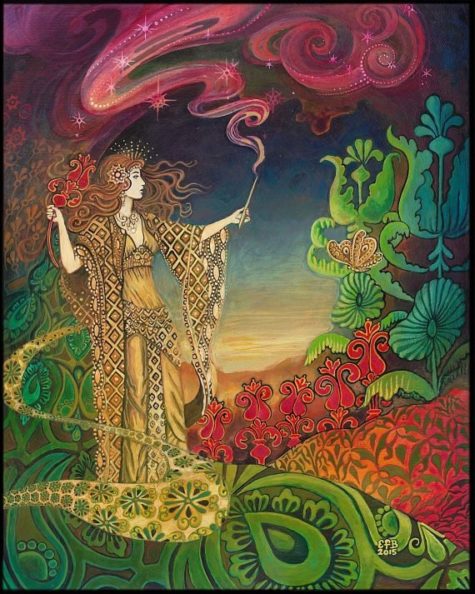
Each plant, animal, rock, and other entity has a spirit (consciousness resonance matrix). These spirits can join together, in a hive-mind, as a spirit of an area. Nature spirits include real biological intelligences, are psychically powerful, and are much less abstract and controllable than the Elementals that many magical people who perform all of their rituals indoors are familiar with. They can be extremely powerful allies.
It is possible to sense nature spirits, to determine if they are receptive to a ritual planned, and to have them actively participate in magical workings if they are.
Some Effects of Working With Nature Spirits:
Spectacular physical manifestations can happen when working with nature spirits in the wild. I have personally seen actual foxfire mark the boundaries of a magic circle at a location that was identified as a receptive power spot and attuned to a planned ritual the day before.
I have seen more than one site attuned for ritual be dry and comfortable, with a round hole in the clouds overhead, on days that were cold and rainy at other nearby locations. Birds have joined in rituals, flying around the circle when energy was being raised; and insects, birds and animals have joined in chants. In addition, the wind often responds to invocations. Generally, these spectacular manifestations happen unexpectedly.
With or without such manifestations, nature spirits often will channel tremendous amounts of power into the magic being performed. It is suggested that you do not consciously try for specific manifestations. Let Nature channel her power into the magic in her own way. If approached with respect, nature may give you many pleasant surprises.
Spectacular physical manifestations are not a necessary sign of success. If you need a spectacular manifestation and nature spirits know this, you will get it. The best success in magic is on the inner planes and more subtle than such manifestations. This success involves beneficial changes in consciousness that last and helpful chains of synchronicity. In addition, working with Nature Spirits can also bring a deep sense of partnership with Nature, and bring new levels of attunement.
To get the best results, perform nature spirit attunement several hours to several days before the main ritual. The purposes of such attunement are to find suitable power spots and to get the help of friendly nature spirits. This timing gives Nature time to gather her children and to prepare to actively participate in the main ritual.
What to NOT do:
If nature spirits are approached with disrespect by attempting to command them rather than listening to them and inviting them to work with you, nature spirits may flee, rebel, or attack. I once attended a ritual by some pseudo-Crowleyites who attempted to perform the “Ritual of the Barbarous Names” at a power spot in a forest and then to extend the circle several hundred yards in all directions.
While the forest in general had loud insect and frog noises, the area at which the ritual took place got quiet immediately when the main ritualist declared that all spirits were subject unto him. The vibes from nature could best be characterized as “Oh yea, Mother…!”
One participant was quickly possessed by an angry spirit and kept repeating “You killed my children, your children will never live in peace.” When the priestess stepped out of the boundaries of the original circle, she was attacked by bees; and bees covered the Book of the Law. Magicians should know better than to attempt to command spirits whose true names they do not know!
Calling Nature Spirits:
To make the most out of working magical ritual in the wild, one should find power spots where nature spirits are receptive to the ritual planned and approach the spirits with respect, as equals. In my experience, the most effective power spots for working with the living intelligences of nature are located in wild areas with diverse, active ecologies.
When entering a wild area to find a site for a ritual, find a place that feels good. Then do the following, either individually or, if in a group, as a guided meditation:
- Relax, while standing upright, and focus on your breathing.
- Breathe deep breaths from the diaphragm. Breathe together if in a group.
- Feel the wind, and let it relax you and awaken your spirit within, as your deep breathing takes you into non-ordinary reality.
- Picture, in your mind’s eye, a light inside you.
- As you breathe, feel the light expand, purify and energize you – as it expands to fill your aura.
- Feel yourself glowing, balanced, purified, and full of power.
- Connect with your inner self (your higher self), and feel your intuitive self operating.
Feel yourself as:
- The wind, full of life and intelligence, communicating with all round.
- The Sunlight, warm, alive, channeling the power to communicate with nature and energizing all around.
- Water, emotional, intuitive, refreshing, and connected with nature.
- The Earth, and note how your physical body is able to wander while remaining part of Mother Earth.
Focus on your spiritual self, and:
- Note the light within and feel it as love,
Expand the light and love beyond the immediate aura of your body to the surrounding area – where you will go to find a power spot and contact nature spirits.
- Telepathically (by thinking while channeling the love and light energy) send out signals to nature spirits to emerge and be aware of your presence.
- Say why you have come, and invite them to join in sharing, mutual celebration, and the work you intend.
- Visualize the light and love energy you are channeling extending out and merging with the light from distant places.
- Feel the power of the Earth flowing up through your body and feet.
- Feel the power from the sky, and channel this power also to further energize the carrier signal of light and love for communicating with nature.
- Visualize the light expanding and merging.
- Continue to send out telepathic signals.
Now go deeper:
- Close your eyes, sit on the Earth, and feel your connection while you channel more light and love.
- Continue modulating the light and love with your thoughts – inviting receptive spirits to join with you and to make themselves known.
- If in a group, someone should start playing a drum at a rate of about one beat per second; and you should listen to the drum and let the drum take you deeper.
Affirm that you are a nature magician, a medicine person, who knows and communicates with nature. Let this part of yourself emerge to full consciousness. Let the drum and the connection to your inner self awaken that part of yourself that naturally communicates with other life forms. Let it awaken your telepathic senses.
- Continue sending telepathic signals to nature.
When you feel ready and an inner urge to begin, open your eyes a crack and look around, while continuing to channel love and light and telepathically calling for a response.
You may see light coming from certain areas that are receptive. You may get other signals, such as a feeling of power or love returning in a certain direction. Perhaps the type of response to this work will be unexpected; follow your intuition in interpreting it.
You may test your connection by communicating (mentally) instructions for signals for yes/no responses (such as light getting brighter for less and darker for no) and then mentally ask questions and observe the responses.
When you have found an areas that seems to be responsive and receptive, begin walking to the area, while beaming love energy. Extend your aura to the area and sense the energy.
Entering A Power Spot:
Before entering a power spot, ask permission to enter. If the response is good, enter; if not, locate another more receptive area.
When entering the power spot, look around. Perhaps the responsive energy will be concentrated around some singularity (a bush, a tree, a specific branch, a moss covered rock, or other entity that stands out). Perhaps the energy will be more general. Use your intuition and feedback from the spirits to guide your actions.
If it feels right, send out a signal that you would like to touch the singularity (or the ground) for better communication. If the response is good, approach beaming love energy, and then touch or hug the singularity (or the ground).
Treat the spirits as you would other Pagans you meet for the first time – be sensitive, open, and listen.
Deepening Communication With Nature Spirits:
Now that you have made contact with spirits that seem receptive, deepen the communication:
- Breathe deep breaths from the diaphragm, and with each breath, feel more refreshed.
- Now imagine that your spine is the trunk of a tree; and, from its base, roots extend deep into the Earth. Deep into the rich moist Earth.
- With every breath, feel the roots extending deeper,
- Feel the energy deep within the Earth and within the waters of the Earth.
- Feel your roots absorbing nourishment from the Earth and from its waters.
- Feel the moist, warm energy rising.
- Feel it bursting up from the Earth and rising up your spine, like sap rises in a tree.
- Feel the energy rise to your crown chakra (at the top of your head).
- Now imagine that you have branches, branches that sweep up and then bend down towards the Earth, like the limbs of a willow.
- Feel the branches extending and interweaving with your surroundings.
- Feel the warm, moist energy of the Earth flowing through your branches.
- As it flows, feel yourself being purified, centered, and connected to the Earth.
- Feel the power from the Earth flowing through your branches and then down back to the Earth, like a fountain.
- Note how your branches absorb energy from the air.
- Also, feel them receiving light (fire) from the sky.
- Feel the energy from above penetrating deep through your body into the Earth.
- Feel the warmth of the Earth rising also.
- Feel the energy circulating.
- Notice how your branches intertwine with the branches of energy surrounding you.
- Feel the energy dancing among your branches and the branches around you.
- Notice how your roots also intertwine with underground energy channels.
- Feel the energy dancing between your roots and the surrounding energy patterns.
Notice how you and the life around you are rooted in the same Earth, breathing the same air, receiving the same fire, drinking the same water, sharing the same underlying essence. You are one with the magical grove.
Telepathically mention the time in the past when nature spirits and people communicated regularly and the need to establish such communication now.
Test your connection by asking questions and observing the responses.
Working With Nature Spirits:
Explain to the spirits the purpose of your coming to them and the nature of the ritual you plan.
If the spirits you contacted are receptive, explain to them the details of the ritual and invite them to provide ideas. Listen, you may receive suggestions on how to improve the ritual. Such suggestions may come in the form of hunches, visions, answers to yes/no questions using pre-arranged signals, or in other ways.
Explain what type of space is needed and ask what the best place to perform the ritual is. You may see light or get other psychic signals leading you to other sites, or you may be at one of them.
You may also ask what the best places for other aspects of the planned work are (picnicking, individual vision quests, etc.).
If preparation of the site is needed (removing briars, preparing a fire circle, etc.) ask permission of the spirits before proceeding with such action.
Before you leave the power spot:
- Tell the spirits you have contacted when you plan to return to do the ritual (visualizing the associated lunar and solar aspects can help with this communication).
- Invite them to join in the ritual when you return and to bring their friends.
- Ask if it would be best to return silently, with drums, with chanting, or with some other form of approach.
- You can also ask the spirits to provide guidance for working in balance and to provide a teacher to provide further guidance.
- Thank the spirits,
- Channel love energy,
- Trigger your memory of the experience,
- If it feels right, leave an offering of tobacco, or beer and honey poured on the ground (or other suitable material).
- Leave in peace and love.
Proceed to other sites that were indicated by the spirits, doing similar meditations at each site.
If you need something, like a staff, a Maypole, or a wand, you can also ask where you can find it and follow the guidance you receive (not slavishly, but as you would guidance from another Pagan).
Before leaving the general area in which you found power spots and contacted nature spirits:
- Channel love energy towards the receptive sites you found,
- Thank the spirits of the land,
- Pull back your roots and branches,
- Ground any excess energy into the Earth (placing your hands on the Earth, breathe in any excess energy, and channel the energy down your arms, while visualizing and feeling the energy going into the Earth),
- Leave in peace and love.
Naturally, you should leave the area at least as clean, and preferably cleaner, than you found it.
If you work with techniques of Wicca or Ceremonial Magic, you may find that by casting a circle, calling the Elements, the Goddess, the Gods, and the local nature spirits while you are at receptive sites, you may be able to greatly increase communication.
Through the use of drums and other power raising techniques, it is even possible to energize receptive nature spirits. The results can be very interesting. If with a coven, such circles can be done as part of a group attunement to a power spot you have located.
If you do not get good feelings in response to your explanation of the ritual and are unable to come up with a ritual that gives good responses, do not try to force a good response. You would only be fooling yourself.
- Thank the spirits for their attention.
- Ask them why they are not receptive (if it feels right and they are communicative).
- Trigger your memory.
- Pull back your “roots and branches,” return any excess energy you feel into the Earth.
- If it feels appropriate, leave an offering of tobacco or other appropriate material, out of respect for the spirits.
- Move to a more receptive site.
If it is hard to find a site that is really receptive, you should consider any impressions you got of why the nature spirits weren’t receptive in the area you were in, and re-think your plans for a ritual, as necessary and appropriate.
It may also be appropriate to look for another general area in which to find a suitable power site that is receptive to the work planned.

What To Do When Returning:
It can be very powerful to purify and center yourself and to attune to the spirits of the land using the techniques previously described for calling nature spirits immediately upon returning to the site.
Often, individuals may have found small specific power spots to which they have a special attunement, where the spirits are interested in participating; but where the site is too small, has too much vegetation, or is otherwise unsuitable for the main ritual. Individual attunement to the spirits in such areas and inviting them to participate in the main ritual can be worthwhile.
Then approach the main ritual site using the previously arranged technique. You should have the details worked out with the spirits of the land. An exceptionally powerful technique involves doing a procession through or past receptive power spots, inviting nature spirits to join as you pass each power spot, and then moving to the central power spot for the main ritual. If participants are at individual power spots, they can join the procession as it passes nearby.
When consecrating space in the wild, or casting a circle, do not set up the perimeter as a barrier to all outside forces; it should be a beacon to attract friendly nature spirits, a container for holding magical power, and a barrier to spirits who it isn’t right to be with.
One thing that is fun and worthwhile in nature is to bring instruments, such as a rattle, a flute and/or a drum, to tune in to nature’s sounds, and to make music in time to nature’s sounds. You may be able to get some very interesting back and forth exchanges of music going with selected creatures of the wild, and get into an amazing jam session.
After the work is complete, be sure to thank the spirits for their participation. Libations and other offerings may also be left for the spirits during and/or after the ritual.
This article is written by Larry Cornett
A ghost apple is a very rare phenomenon that happens when freezing rain coats old and rotting apples and creates a solid icy shell around them. Because apples have a lower freezing point than water, the apples that are inside the thick icy shell melt before their icy shell. When gently shaken, these mushy apples slip out of their icy shell and leave the “ghost.”
For this to happen, it requires extreme changes in temperature, freezing rain, an abrupt warm up. All of which have to happen in just the right amounts and for the optimum amounts of time.
Because they are so rare, and so interesting, it follows that a Ghost Apple would make for a very effective magickal ingredient. If you happen to be lucky enough to find a ghost apple, or if you are able to figure out how to make one, here are some ideas for ways to use them in magick.
- Because apples are representative of love, a rotten apple represents a toxic relationship, or individual.
- The icy shell around the apple speaks of the walls you build to protect yourself.
Sometimes, that icy shell might represent an attempt to protect and shield a relationship that is unhealthy and unhappy. The icy shell might also represent walls that you have created around inner hurts and trauma. Walls that keep the world out, and may indicate a feeling of being frozen.
- The empty shell of ice shows that the relationship is ended, the toxic person is gone, but the trauma remains.
Often when a difficult or toxic relationship is ended, it leaves you with an inability to open up, or allow yourself to feel vulnerable again.
A spell for using a Ghost Apple to open your heart to love again can be found in the Book of Shadows. If you would like to try your hand at making your own Ghost Apples, I would suggest the following method:
You will need the following:
- An apple
- A plastic container that is larger than your apple
- Water
To speed up the process, bake the apple until it is soft. Allow the apple to cool to room temperature. Fill the container about halfway with water, and then place the cooled apple into the container upside down. The bottom of the apple should be just slightly above the level of the water.
Now, freeze your container.
When the water is frozen solid, remove it from the container and suspend it, upside down until the apple is thawed enough to slip out of the icy casing. You now have a home made version of a Ghost Apple.
For best results, put the power of intention into the process. Visualize the apple as the person or relationship slowly going bad while it is baking. The water in the container represents what it is that feels frozen. As the apple slips out of the ice, see it as the toxic person or situation slipping away.
You are now ready to do some magick to release yourself from the icy residue, which can be as simple as allowing it to melt away.
- Ruler: Sun, Apollo
- Type: Plant
- Magickal Form: Flowers, Vine, Leaves, Seeds
With it’s lovely flowers, heart shaped leaves, and clinging vine, the morning glory plant is definitely something to consider when constructing a love and/or relationship spell.
Grind morning glory seeds to a fine powder and add to flying incense to gain psychic sight.
In the language of flowers, the morning glory represents affection. As a gift, these beautiful flowers can be given in nearly any way imaginable – from the traditional bouquets to pressed or dried single blossoms. When given as an arrangement, you might also take color into account. That is to say, your message may generally express a feeling of affection, but that affection might be tinted with the fiery passion of a red blossom, the calm of a blue one, or the spirituality of a purple one.
In some cultures the ipomoea aquatica variety of morning glory is considered a delightful green that can be used in a number of dishes. They are frequently placed in salads, stir fries, mixed with noodles, or simply used as a garnish.
Although morning glory seeds are considered to be mildly toxic and have side effects such as hallucinations, nausea and drowsiness, many people still consider them to have powerful medicinal effects. The Aztec narcotic ololiuhqui, derived from a wild morning glory, was spread on surface of affected parts for gout, and the seeds were eaten by the Aztecs to bring visions. Their molecular structure resembles that of LSD. The seeds are sold in nurseries for planting.
- NOTE: Using the seeds as a hallucinogenic is not only illegal but they are harmful when ingested.
In China, the morning glory was once considered a highly effective laxative; to the native Indians of Mexico, both ipomoea tricolor and turbina corymbosa were frequently used in rituals and medicine for their supposed soothing properties.
In folk medicine, the boiled leaves of certain species are used as a diuretic; the seeds are chewed to aid in soothing stomach pains, while the whole plant may be cooked and turned into a topical ointment to treat rheumatoid arthritis. Morning glory tea was said to be good for dysentery and diarrhea.
According to Scott Cunningham (Encyclopedia of Magical Herbs) the morning glory or bindweed (Ipomoea spp) are masculine plants, classified as being under the influence of the planet Saturn; the element water, and with powers over happiness and peace.
Cunningham indicates that one can “Place the seeds beneath the pillow to stop all nightmares.” And also that grown in the garden, blue morning glories bring peace and happiness. The root of the morning glory, according to Cunningham, may be used as a substitute for High John the Conqueror root.
Sources:
- What it is: Bioluminescent Fungi
- Associated with: Foxes, Fox Spirits, Will-o’-the-Wisp, Fairies
- Important: None of the bioluminescent fungi are edible. Do not eat them.
If you ever find yourself walking through a damp, dark woods at night without any flashlight, you might just witness something amazing. If you’re lucky, in the undergrowth concentrated on and around rotting logs, you’ll notice a green or blue glow. It’s foxfire, and it’s beautiful. Often foxfire looks as if the bark of a fallen log or old tree branch is glowing at night. It’s not the wood but rather what’s feeding on it that’s creating the light. With some species, it’s the mushroom cap itself that glows, in other species only the underside of the cap is luminescent.
For centuries this was called fairy fire or will-o-the-wisp and was attributed to something mystical. The oldest recorded foxfire sighting was by Aristotle in 382 BC, he thought it was a cold fire burning on the logs. The actual cause of foxfire was only discovered in 1823 when glowing beams in mine shafts were investigated.
Magickal Uses
Foxfire in the wild is magickal all by itself, and can indicate a message from the underworld, or a warning to be careful where you are going. It not easy to come by, and if you are lucky enough to have a place in the wild where you can see it, be very protective of the area.
If you acquire some foxfire, use it to set a magickal mood, to bring the energy of the fairy realm to a dark moon ritual, or to make contact with Fox Spirits, ghosts, and other creatures of the night.
The compound in the fungi that creates the light is called Luciferin (meaning light bringer), which brings to mind thoughts of Lucifer and the underworld. If you are involved in dark magick, foxfire would definitely be an ingredient that could be added to rituals and spells, particularly for magickal workings designed to lead someone astray.
How can you experience foxfire for yourself?
The best way to see foxfire is in old, moist oak woods where plenty of big dead limbs and old stumps litter the ground. Foxfire can be seen in the spring as the forest floor warms. The light is so dim, many people never notice it. To see foxfire, pick a night with no moon. Keep away from areas with artificial lights and do not use a flashlight. Your eyes must be well adjusted to the dark.
The aim is to be out on a dark night, with a mild temperature and to walk in woods that are damp but not wet. Think of foxfire as Goldilocks — not too hot, not too cold, not too wet, not too dry. When conditions are just right, and you’re in just the right spot with your eyes adjusted to the dark, the forest around you will glow — and it’s magical.
According to Carol Probets, a nature guide from the Blue Mountains of Australia, “If you learn to recognize it in the daytime, it’s much easier to find it in the nighttime rather than wandering around in the dark.”
Amazon sells bioluminescent fungi kits for those who want to grow their own. The Glow in the Dark Mushroom Habitat Kit features Panellus Stipticus (Bitter Oyster) spores along with whatever is needed to get them growing. Or you could explore all the other glow in the dark fungi available for sale online.
A personal experience with Jack-O-Lantern (Omphalotus illudens) luminescent mushrooms:
A couple of years ago, I went out at night to sit with a clump of jack o’lanterns around a stump in my neighbor’s lawn. It took about 10 minutes for my eyes to be able to make out the glow. During that time, I counted shooting stars, meditated on the answer to the ultimate question (42), and listened to night sounds. Among those sounds was a persistent shushing, coming from all around me. When I had basked long enough in the glow and switched on my flashlight, I found I was surrounded by hungry giant slugs, slithering softly through the grass as they homed in on the Jack O’Lanterns, which apparently don’t upset slug tummies at all.
A teacher at Cornell University talks about Bitter Oyster (Panellus stipticus).
I have often sent students home with hunks of wood bearing this fungus. If you are prone to wakefulness in the middle of the night, as I am lately, P. stipticus is a great thing to have on your bedside table. Waking up and finding its glow on your nightstand is a sure way to erase the day’s worries, dispel night terrors, and forget that strange clunking in the basement. You’ll need a fresh northeastern specimen–nice pliable fruiting bodies. It’s handy to know that fairly crispy, dry specimens will revive well if you wet them. I run them under the kitchen tap, and wrap them in wet paper towel. When I go to bed, I peel back the paper towel, and leave their hunk of wood sitting damply in a dish until I awake and find them glowing steadfastly beside me.
While most fungi don’t possess this ability, there are some 71 known species of bioluminescent mushrooms contained within three groups— the Omphalotus, Armillaria, and Mycenoid lineages. Their degrees of light intensity differ; while many of the Australian species are very luminous, North American species tend to emit less light and require adjustment to the dark before they can be seen. Some don’t glow brightly enough for their light to be visible to the human eye – rather, the glowing effect shows up after a long exposure when taking a photograph.
Here is a short list of a few of the more well known bioluminescent mushrooms, along with a little bit of information about each one:
- Armillaria mellea – Honey Mushroom – The most widespread of the bioluminescent fungi because it populates forests throughout North America and all the way over to Asia.
- Armillaria fuscipes – Honey Fungus – Plant pathogen that causes Armillaria root rot on Pinus, coffee plants, tea and various hardwood trees. It is common in South Africa. The mycelium of the fungus is bioluminescent.
- Mycena chlorophos – Night-light Mushroom or Green Pepe – Glows brightest at one day old, around 80 degrees Fahrenheit. Once the caps open, time is limited, and the bioluminescence fades.
- Mycena haematopus – Bleeding Fairy Helmet – One of the prettiest bioluminescent mushrooms. It can be found throughout Europe and North America. They get their name from the red latex they ooze when they’re damaged.
- Mycena luxaeterna – Eternal Light Mushroom – A rainforest fungus that can only be found in Brazil. Their hollow stems glow in the dark.
- Neonothopanus gardneri – Flor de Coco – One of the world’s brightest bioluminescent fungi, found on decaying palm leaves, native to Goiás, Piauí and Tocantins states in Brazil.
- Omphalotus illudens – Jack-o’lantern – Found in hardwood forests in eastern North America, only its gills glow.
- Omphalotus nidiformis – Ghost Fungus – The best time to look for it is in autumn, particularly after a bit of rain. It occurs in Australia, Victoria, Tasmania, generally growing on tree trunks and stumps.
- Panellus pusillus – Takes over tree branches in large groups. The result is like sparkling string lights in the dark forest. It has been recorded in Australia, Asia, Europe, North America, and South America.
- Panellus stipticus – Bitter Oyster – An unassuming fungus by day and a striking beauty by night. Its gills glow under their own power. Though this fungus occurs in Europe and in the Pacific Northwest , individuals found outside the northeast don’t glow.
- Roridomyces roridus – Dripping Bonnet – This species can be bioluminescent, and is one of the several causative species of foxfire.
- Xylaria hypoxylon– Candlestick Fungus – Typically grows in clusters on decaying hardwood. The fungus can cause a root rot in hawthorn and gooseberry plants.
In Scandinavia, mycelia-infested bark was used as a sort of night light during the long winter nights. The practical uses of these mushrooms extended to other areas of the globe as well; in the late 17th Century in Herbarium Amboiense, Dutch physician G.E. Rumph commented on how Indonesian natives used bioluminescent mushrooms as primitive flashlights.
Sources:
- Planet: Venus
- Element: Water
- Symbolism: Love and Trust, Health, Garden Magick
- Stone: Emerald, Rose Quartz
- Birds: Grosbeak
- Color: Yellow-Green, Pink
- Deity: Demeter, Hera, Pomona, Frigga, Freya
- Folk Names: Fruit of the Gods, Fruit of the Underworld, Silver Branch, The Silver Bough, Tree of Love
- Magickal Uses: Love spells, Love Divination, Healing spells, Libations, Offerings, Wand creation, Poppet Magick, and Sachet or Potpourri Magick.
The forbidden fruit yields much power. Cut it in half horizontal to the stem to reveal the witches’ pentagram. A secret way to let someone know that you are a witch is to cut an apple crosswise to show the formation of the seeds in a star shape.
Apples are a food of love. Give an apple to a lover as a present, cut it in half and eat on half while your lover eats his or hers. Alternatively, offer a bite to a prospective lover. If he or she accepts, you will begin a love affair. Twist the stem of an apple while calling out the letters of the alphabet. The letter you call out as the stem breaks will be the first letter of the name of your true love. Rub apple oil or fragrance on red candles to bring true love. Leave an offering of an apple under a tree for Venus and make a request for love.
- Red apples are for love.
- Golden apples for fame and popularity
- Green apples for prosperity
Apple is a great wood for a magickal wand. It is a favorite witch tree. The fruit is used at Mabon and Samhain, and for love spells. Eating an apple opens the gateway into other realms, most often faeryland. It provides illumination and the gaining of knowledge. Dreaming of apples symbolizes prosperity and the good life.
Use apple cider in place of blood or wine if they are called for in old magickal spells and rites. Apples can also be used in place of a poppet.
At Samhain, winning the game of bobbing for apples meant that you would be blessed by the Goddess for a year. Since apples were symbols of Avalon, capturing one from the water represented crossing to the holy isle. The apple is also considered one of the foods of the dead, so they are often piled high on Samhain altars, for Samhain is sometimes known as the “Feast of Apples.”
In 19th Century Lower-Saxon Germany, the first bath water used by a newborn baby was poured over the roots of an apple tree to ensure that the child would have red cheeks, and if it was a girl, large breasts!
Apples and apple blossoms are symbolic of love, healing and immortality. Burn the blossoms as incense, wear as a perfume, and make them into herb candles for a handfasting.
Apples can be used for healing as well. Cut an apple in three pieces, rub each on the sick person’s body, and then bury them. The decaying apple will cure the illness. The same ritual is done with warts.
For fertility, the seeds can be planted in establishing a shrine of trees to Aphrodite or other fertility goddesses. Dried apple seeds can be ground into a powder with a mortar and pestle and used as incense. Apples may be eaten, the juice shared in a chalice ritual cup, or offered as a libation when seeking knowledge through the Tree of Life… an act of calling upon the wisdom from the divine.
Apple Manifestation Spell
Take an apple, a beautiful apple, and then carve a symbol of what you wish on it. This may be a heart, if you desire romance, or you can even write the actual word “LOVE” on it. You can also write a sentence like “I WANT 1000 $” or maybe “I AM HANDSOME” , “I AM HAPPY”, or “I AM A WIZARD”!
Anything you want to be manifested in your life, could be written on the apple. When you are done writing what you wish, take the apple, and start eating it CLOCKWISE. With every bite you take, you get what you desire. Now that you’ve eaten the Apple your wish has already become reality in you.
When you have consumed the apple, you can bury the seeds or you can just toss the core (seeds and all) into a natural environment or wooded area. Now that the rest of the apple is buried or lies on the soil, it will call upon the nature’s force to manifest your desire. Take few minutes to visualize what you have wished for.
Please always remember that when you are visualizing, you should see yourself ALREADY having what you want. Visualize yourself happy in a Marriage, or Rich spending you money on what you desire etc.
Samhain Apple Spell For Love
There is an old Scottish custom of eating an apple on Samhain night while looking into the mirror. Legend says that you will see your true love reflected there. A Victorian Halloween card states the following verse:
On Halloween look in the glass,
Your future husband’s face shall pass.
A modern adaptation of this charm could include standing before the mirror at midnight on Samhain. The new charm will help you to recognize a future or potential love.
Slice the apple crosswise to expose the star-shaped arrangement of seeds inside. Light a tea-light candle and place the apple slices and the candle before the mirror. At midnight, say the following charm three times:
As this Samhain night rushes past,
Reveal to me a love that shall last.
May I know them when next we meet
May our love be both strong and sweet.
Allow the candle to burn out, and the next morning leave the apple pieces outside as an offering to the nature spirits. Pay attention and see who you “meet” within the next thirty days.
Witchy Ways To Use Apples
1. Use apples in tarot spells. Surround the Empress card from the tarot with apple slices (dried or fresh) and leave them on the altar for help with fertility.
2. Pour a libation apple juice to encourage wisdom. In Western lore, apples strongly symbolize knowledge and self-awareness. Pour a libation of apple juice during your next ritual to ask for the gift of insight or to seek help with life decisions.
3. Include apples in spells to avert temptation. Apples may be used in weight loss spells or spells for seekers fighting addictive patterns. Bury an apple with tobacco (or another symbol of vice) and light a candle every night for a full moon cycle to support earnest efforts at breaking negative habits.
4. Toss in cauldron brews for love. Add apples peels to a large pot or cauldron of water with cinnamon, allspice and/or ginger root to infuse your home with romance. Great for date night!
5. Cut an apple in half to find the pentacle. If you cut an apple in half (the “fat way,” not the “tall way,” if that makes sense), you will find a pentacle star in the middle. Press spell ingredients into the flesh or or use it to symbolize earth on an all-natural altar.
6. Make a wand from the wood. Apple branches make gorgeous wands. Leave yours natural, or decorate it with gemstones, shells, sea glass, feathers, ect.
7. Fill a basket of apples and put it on your Samhain or Mabon altar. As the “veil between worlds” thins between Mabon and Samhain, our connection to our ancestors grows closer. Apples symbolize the food of the dead, so leave them on the altar to honor your ancestors and welcome them to “feast with you” during the harvest season.
8. Burn apple blossom incense to enhance your connection to other realms. All parts of the apple are appropriate for inclusion in rituals for heightened awareness, but the dried blossoms make especially convenient loose incense.
9. Include the seeds in protection spells. The bitter seeds of an apple make excellent additions to mojo bags, spells or amulets for protection.
10. Pour apple cider to give life to a newly dug field, or garden.
11. Plant an apple tree your yard to bless your home for prosperity. Apples symbolize abundance and growth, making them the perfect “centerpiece” tree for garden magic. If you live in a climate where apple trees do well and you lucked into a home with land, the commitment of an apple tree to your homestead with bless you for years to come.
12. Use a crabapple, or a cultivated apple if you don’t have crabapples available. If possible, use one that you have hand picked. Carve the initials of the one you love and desire, and your own initials, in a ring around the apple. Bury it in the ground, or commit it to a body of water.
The Lesson of Apple
The apple teaches the lesson of love and faith, generosity and gratitude. Love not just between man and woman but as the driving force behind our existence and the relationships that we share with others; faith both in ourselves and in others; and generosity and trust in the understanding that a heart that is open to give and receive is both the gateway to personal happiness and fulfillment and the key that unlocks the secrets of the Otherworld. The generous apple satisfies body, mind, and spirit, and warns against miserliness, for like attracts like. What we give will be the measure of all we receive.
Sources:
- The Goddess Tree
- Moody Moons
- Magical Herbalism
- Encyclopedia of Magickal Ingredients
